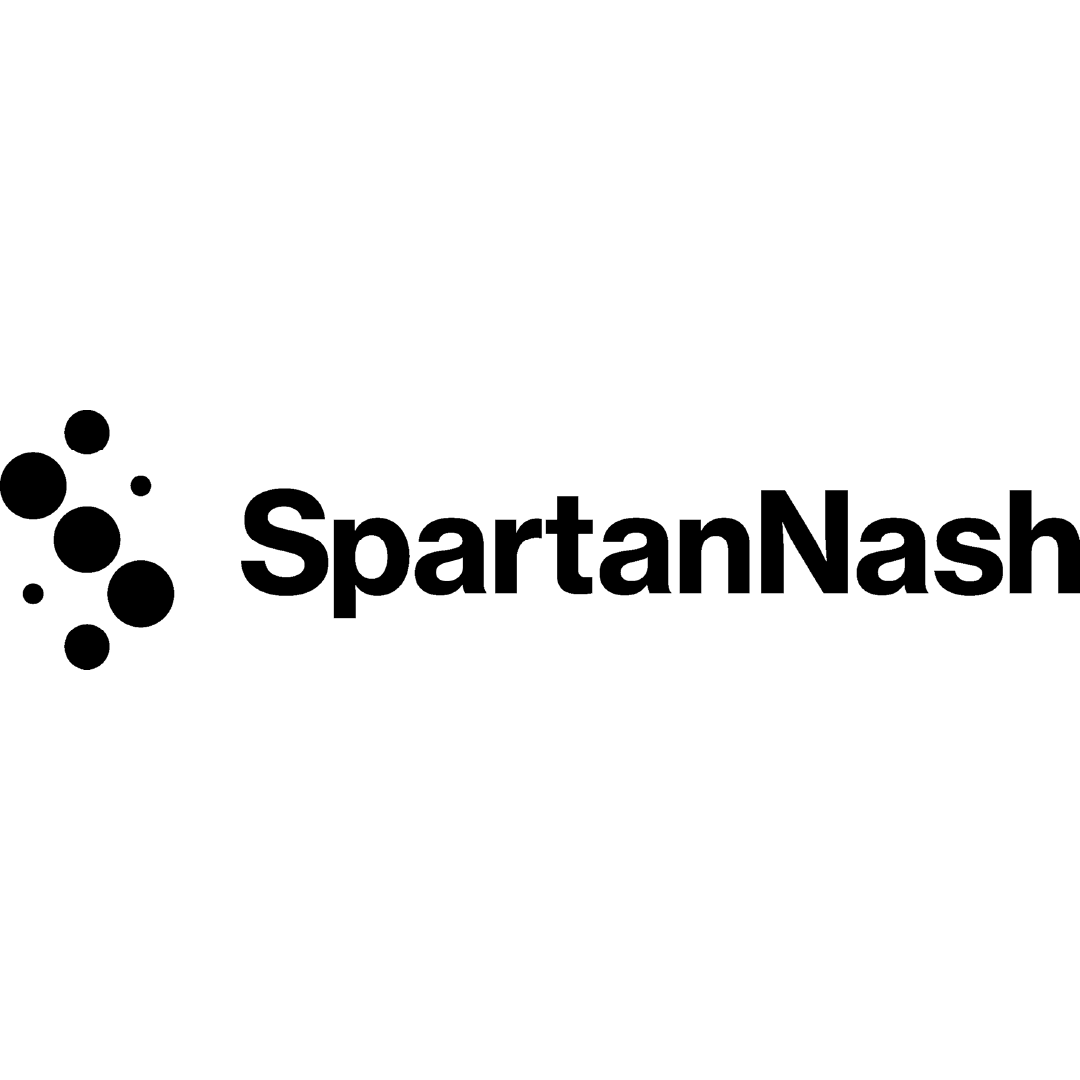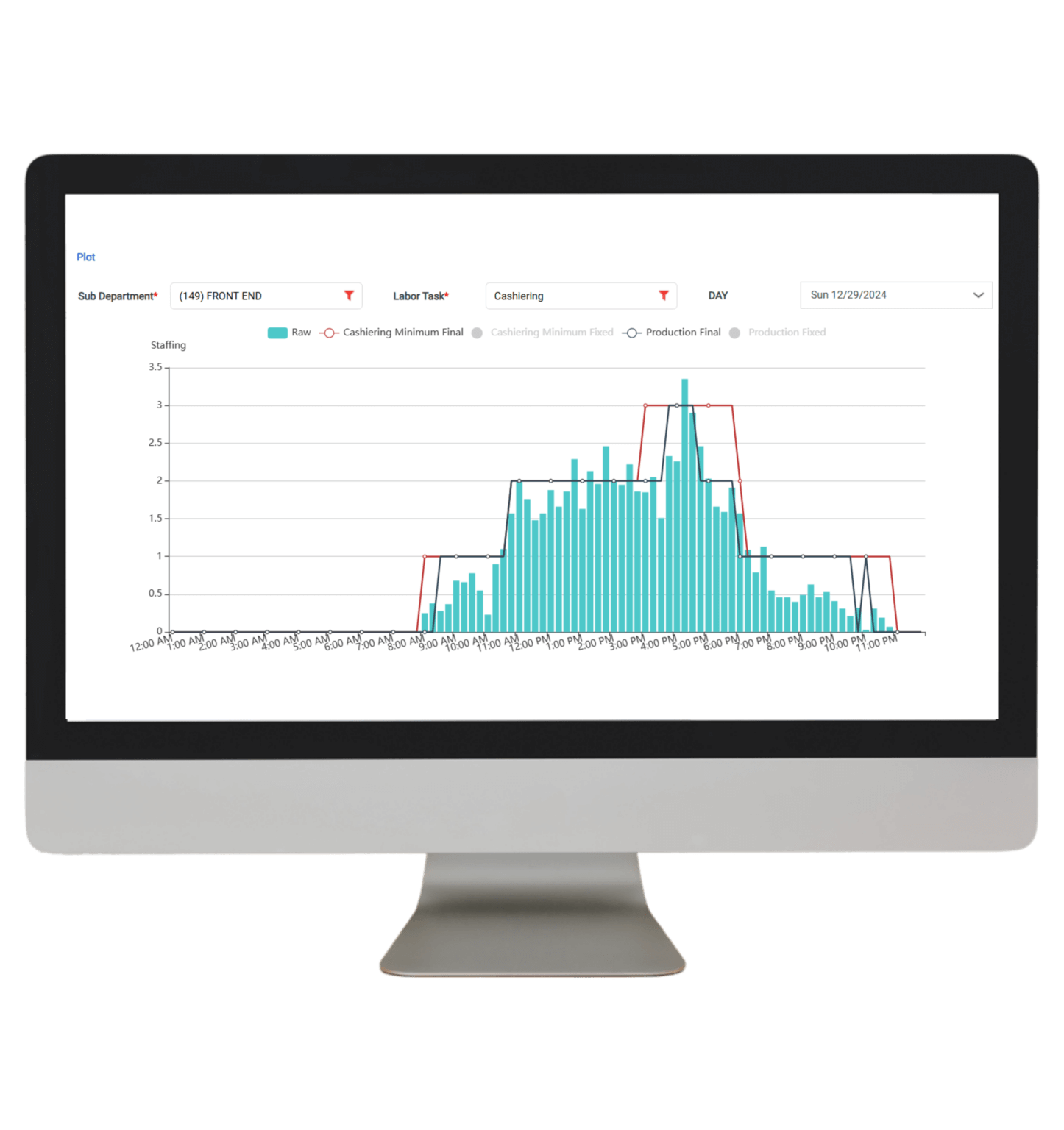

















Why Staff Planning Matters
Forecasts and labor standards are only part of the picture. Real staffing decisions are also shaped by service goals and business directives. Many workforce tools treat these as afterthoughts. Logile Staff Planning puts them front and center, serving as the “bridge” between forecasting and scheduling so you can create store-specific staffing plans that balance business needs, budget goals, and service expectations.

Who's It For?
Key Capabilities
Evaluate Cost of Business Rules
Analyze the labor impact of business rules. Assess the efficiency cost of operational policies by identifying hours increases.
Run What-If Scenarios
Quickly model new staffing rules in a safe sandbox. Test, simulate, and compare outcomes without disrupting production—so you can adapt with confidence.
Plan Workforce Needs
Use long-term, store-level forecasts to plan the right headcount mix. Align labor resources to demand and business requirements, and be ready for seasonal or market changes.
Deliver Better Service
Apply staffing rules directly to your labor model. Fine-tune service levels beyond simple minimums and coverage, and apply store-specific coverage models without manual setup.
Future-Proof Your Business
Continuously evaluate the impact of new policies, labor laws, or operational changes. Adjust staffing strategies proactively before gaps affect customers or associates.
Results & Outcomes
How It Works
- Establish a Data-Driven Foundation for Workforce Strategy: Build your staffing plans on a foundation of accurate, department-level demand forecasts. This ensures your labor strategy is directly tied to anticipated customer traffic and sales volumes.
- Model Future Capacity and Optimize Hiring Pipelines: Proactively identify talent gaps by modeling workforce capacity against forecasted needs. Plan hiring ramps and skill development initiatives by specific roles to ensure you're prepared for future demand.
- Mitigate Risk with Confidence Through Scenario Planning: Stress-test your staffing strategy before committing. Run "what-if" scenarios for events like new store openings, seasonal peaks, or promotional campaigns to understand potential risks and opportunities.
- Seamlessly Execute Your Approved Workforce Strategy: Once your strategic plan is finalized, automatically feed the approved labor targets and headcount into the Budgeting and Scheduling modules, creating a seamless flow from high-level strategy to daily execution.

Integrations
Our staff planning is powered by native integrations, creating a seamless flow of data between forecasting, budgeting, and scheduling for a truly unified labor strategy.

Explore Logile's tightly integrated yet modular solutions—each one powerful alone,even better together.
Forecasting
15-minute, promo- and weather-aware forecasts for sales, items, traffic, and staffing.
Labor Modeling
Streamline your store processes, manage inventory and develop accurate labor standards, labor models, forecasts and budgets.
Staff Planning
Build smarter staffing plans before you schedule
Budgeting
Dynamic, store-level labor & sales budgets that adjust weekly—not yearly
Scheduling
Task‑based, wall‑to‑wall schedules with effectiveness scoring and predictive‑scheduling compliance.
Time & Attendance
Accurately and efficiently automate the process of collecting, calculating and reporting of associate work data.
Task Management
Bring order to the frontline. Ensure every task gets done.
Fresh Item Management
Forecast → recipe → production → labeling on mobile to cut shrink and lift freshness.
Food Safety Solutions
Digitize checks, automate corrective actions, and centralize plans—audits made easy.
FAQs
Staff Planning builds the optimal labor plan based on forecasted demand, business rules, and staffing constraints at the 15-minute offset by task. Scheduling is the process of covering the staffing demand based on eligible employees.
Yes. Logile Staff Planning shows how much labor is driven by your true demand versus the rules you apply (like coverage minimums or service goals). This transparency helps identify where efficiency can be gained.
Absolutely. You can run simulations in a sandbox environment, test different staffing rules, and compare outcomes without affecting production.
It’s built for workforce planners, operations leaders, and store managers who need to balance service expectations with labor budgets and compliance requirements.
Yes. Store-specific, long-term forecasts help you plan the right headcount mix, anticipate seasonal needs, and prepare for growth or business changes.
By applying staffing rules directly to your labor model, you can fine-tune coverage for peak times, service counters, or checkout lanes, ensuring customers receive better service without overstaffing.
Yes. You can apply store-specific coverage models quickly, without having to configure each store separately.
Most retailers see immediate benefits in labor transparency and planning accuracy within the first cycle, along with reduced time spent on administrative tasks.




